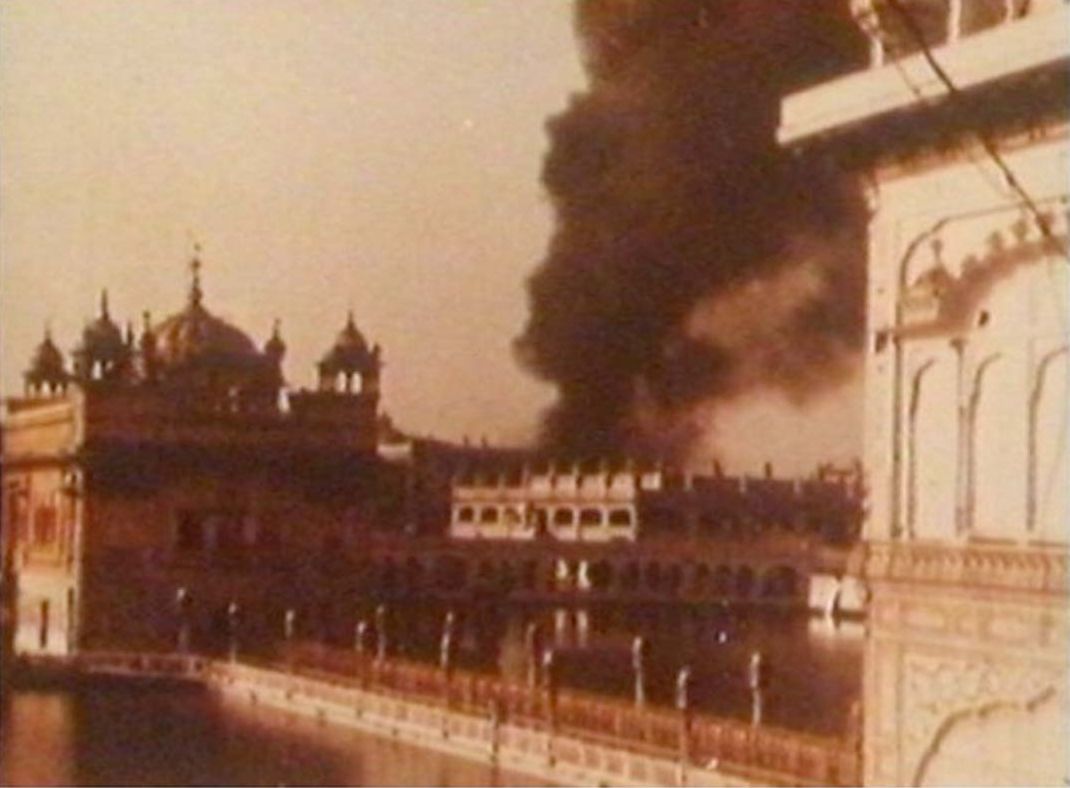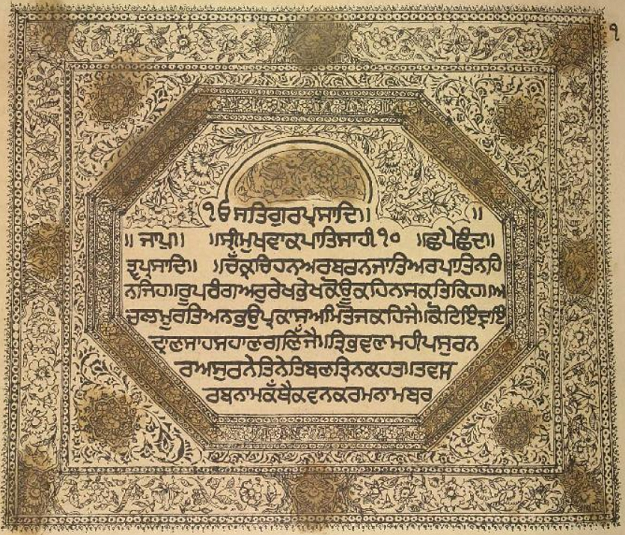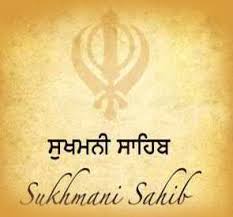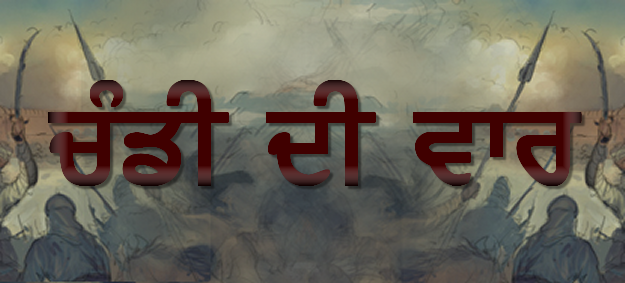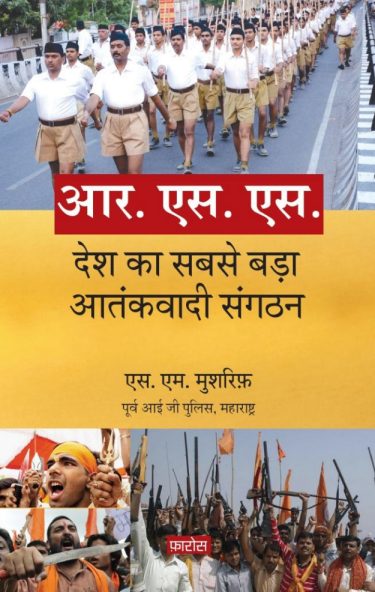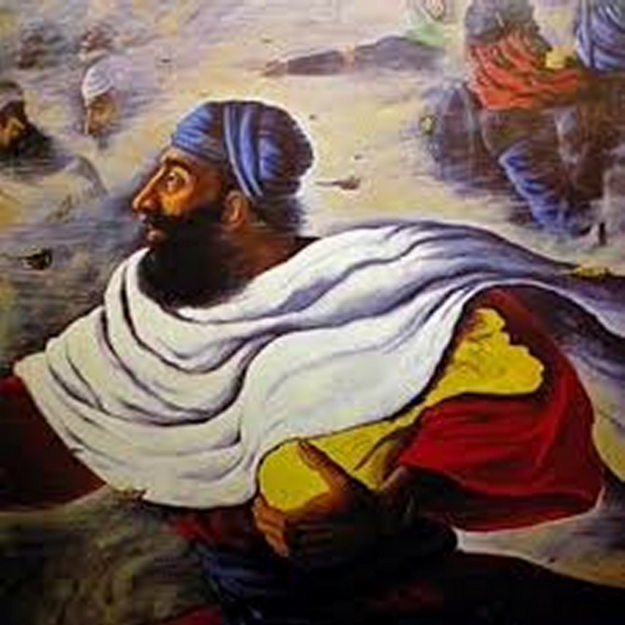
In the first paragraph of Jaap Sahib Guru Sahib makes his aim very clear: no worldly name can ever describe Akalpurakh. He has emphasized on using the karam-naam (names associated with deeds, actions) to describe the greatness of Akalpurakh.
ਤ੍ਵ ਸਰਬ ਨਾਮ ਕਥੈ ਕਵਨ ਕਰਮ ਨਾਮ ਬਰਣਤ ਸੁਮਤਿ ॥ ੧॥
All Thy Names cannot be told. One doth impart Thy Action-Name with benign heart.1.
Obviously after this, the significance of the names used for Waheguru becomes trivial. One may call Waheguru as Ram, Krishna, Shiva, Hari, etc as has been done in Gurbani. Guru Gobind Singh Sahib has invoked the karam-naam in the epic dramas that he has narrated.
Similarly, Guru Gobind Singh Sahib narrated the story of Chandi in Chandi Charitar (I and II) in Braj language, and in Chandi di Vaar in Punjabi. In metaphorical and symbolic narration Guru Sahib has narrated the story of Chandi's war with the demons to emphasize the war between good and evil.
The title Chandi Charitar itself emphasizes the fact that Guru Sahib narrated the deeds of Chandi. In his writings Guru Sahib metaphorically adapted the names Bhagauti, Khanda, Chandi, Bhawani, interchangeably to describe the primal force of Waheguru’s creation.
The daily ardas of the Sikhs invokes that power of Akalpurakh. ਪ੍ਰਿਥਮ ਭਗਉਤੀ ਸਿਮਰਿ ਕੇ.
Also ਖੰਡਾ ਪ੍ਰਿਥਮੈ ਸਾਜ ਕੈ ਜਿਨ ਸਭ ਸੈਸਾਰੁ ਉਪਾਇਆ॥
Similarly in the first chapter of Chaubees Avtar Guru Sahib says:
ਪ੍ਰਿਥਮ ਕਾਲ ਸਭ ਜਗ ਕੋ ਤਾਤਾ. ਤਾ ਤੇ ਭਯੋ ਤੇਜ ਭਿਖਯਾਤਾ
ਸੋਈ ਭਵਾਨੀ ਨਾਮੁ ਕਹਾਈ. ਜਿਨਿ ਸਿਰਗੀ ਯਹ ਸ੍ਰਿਸਟਿ ਉਪਾਈ.29.
Waheguru is the father of the Universe since its inception. It is from Him that the energy emanated in the form of primal force. And that radiance was called by the name of Bhawani which was instrumental in the creation of the Universe.
The epic story in Chandi Charitar-I has been adapted from Markanday Puran (one of the 20 puranas). Though Guru Sahib narrated this epic from Markanday Puran he left a bulk of the text from it. From the 134 Chapters (9000 saloks) in the original text of Markanday Puran, Guru Sahib adapted, transformed and translated only 8 Chapters. What he left is also very significant. He left all the chapters dedicated to Durga’s praise. He also left the text that described the sacrifices made for Chandi. He however narrated and appreciated the part that had the detailed description of war. In his adaptation, the Chandi Charitar, Guru Sahib himself writes "I have merely narrated the story, which is the human drama. This has been completed and whosoever reads it will obtain the objective."
Also in the beginning of the narration, Guru Sahib invokes Akalpurakh making it very clear that He is the Creator and is superior to all his creation.
ਚੰਡੀ ਚਰਿਤ੍ਰ (ੳਕਤਿ ਬਿਲਾਸ )
ੴ ਵਾਹਿਗੁਰੂ ਜੀ ਕੀ ਫਤਹਿ ॥
ਸ੍ਰੀ ਭਗਉਤੀ ਜੀ ਸਹਾਇ ॥
ਅਥ ਚੰਡੀ ਚਰਿਤ੍ਰ ਉਕਤਿ ਬਿਲਾਸ ਲਿਖਯਤੇ ॥
ਪਾਤਸਾਹੀ ੧੦
ਸ੍ਵੈਯਾ
ਆਦਿ ਅਪਾਰ ਅਲੇਖ ਅਨੰਤ ਅਕਾਲ ਅਭੇਖ ਅਲਖ ਅਨਾਸਾ ॥
ਕੈ ਸਿਵ ਸਕਤ ਦਏ ਸ੍ਰੁਤਿ ਚਾਰ ਰਜੋ ਤਮ ਸਤ ਤਿਹੂੰ ਪੁਰ ਬਾਸਾ ॥
ਦਿਉਸ ਨਿਸਾ ਸਸਿ ਸੂਰ ਕੈ ਦੀਪਕ ਸ੍ਰਿਸਟਿ ਰਚੀ ਪੰਚ ਤਤ ਪ੍ਰਕਾਸਾ ॥
ਬੈਰ ਬਢਾਇ ਲਰਾਇ ਸੁਰਾਸੁਰ ਆਪਹਿ ਦੇਖਤ ਬੈਠ ਤਮਾਸਾ ॥ ੧ ॥
Chandi Charitar (Ukti Bilas)
Ik Onkar Waheguru Ji Ki Fateh
Sri Bhagauti Ji Sahai
Now commences the narration of Chandi Charitar Ukti Bilas
Patshahi 10
Sawwaya
The Lord is Primal, Infinite, Account less, Boundless, Deathless, Garbless, Incomprehensible and Eternal.
He created Shiva-Shakti, four Vedas and three modes of maya and Pervades in three worlds.
He created day and night, the lamps of sun and moon and the whole world with five elements.
He extended enmity and fight between the gods and demons and Himself seated (on His Throne) scans it.1.
The above lines should not leave any doubt in the minds of the people about who is being felicitated here. It is Him who is the creator of Brahma, Vishnu and Shiva. This strongly endorses the Gurmat philosophy. Unfortunately some people still can’t digest the fact that Guru Sahib can actually narrate an epic from mythology. Mere mentioning of the mythological references in Gurbani shatters their belief. The only logic that is given is ''How can Guru Sahib write this?''.
The literature in the form of poetry and prose is hugely influenced by its creator’s free floating imagination. The aim of the writer may be clear and direct. But the way he describes that aim through metaphors, similes and symbolisms, still keeping his focus on the aim, describes the greatness of the writer.
When Guru Sahib doesn’t even acknowledge Brahma, who according to Hindu theology is the one who created Durga, how can Guru Sahib felicitate Durga?
ਮੈ ਨ ਗਨੇਸ਼ਹਿ ਪ੍ਰਿਥਮ ਮਨਾਊਂ ॥ ਕਿਸ਼ਨ ਬਿਸ਼ਨ ਕਬਹੂੰ ਨਹ ਧਿਆਊਂ
In the second pauree of Chandi di Var, Guru Sahib goes on to declare that neither the demi-Gods nor demons could comprehend the Supreme Lord.
ਤੈ ਹੀ ਦੁਰਗਾ ਸਾਜਿਕੈ ਦੈਤਾ ਦਾ ਨਾਸੁ ਕਰਾਇਆ ।
ਤੈਥੋਂ ਹੀ ਬਲੁ ਰਾਮ ਲੈ ਨਾਲਿ ਬਾਣਾ ਦਹਸਿਰੁ ਘਾਇਆ ।
ਤੈਥੌਂ ਹੀ ਬਲੁ ਕ੍ਰਿਸਨ ਲੈ ਕੰਸ ਕੇਸੀ ਪਕੜਿ ਗਿਰਾਇਆ ।
ਬਡੇ ਬਡੇ ਮੁਨਿ ਦੇਵਤੇ ਕਈ ਜੁਗ ਤਿਨੀ ਤਨੁ ਤਾਇਆ ।
ਕਿਨੀ ਤੇਰਾ ਅੰਤ ਨ ਪਾਇਆ ।
You also created Durga so as to destroy the demons.
Rama acquired the strength from You with which he killed the ten-headed Ravana, with his arrows.
Krishna acquired the strength from You to destroy Kans by holding his hair and throwing him..
Many great ascetics and demi-gods endeavoured arduous austerities during many aeons.
But none could comprehend Thee.
In Chandi Charitar Guru Sahib narrated the war to invoke the warrior spirit in the Khalsa. In a beautiful, poetic narration the intricacies, spirit, vigor and weaponry of the war are described. The physical and mental sustainability in a battlefield is not easy. It is not only the physical and technical might that ensures victory in the battlefield but psychological sustainability plays a very important role, too. Today even the armies of the most powerful nations, with all the weaponry and technologies at their disposal, have to rely on texts, music, films and other audio-visual materials to instill that spirit among their men in the battlefield.
The epic of Chandi Charitar does the same thing. Guru Sahib used various Chhand of Bir Ras (Naraz Chhand, Vijay Chhand, Bhujang Prayat Chhand) to narrate the epic.
ਸੰਗੀਤ ਭੁਜੰਗ ਪ੍ਰਯਾਤ ਛੰਦ ॥
ਕਾਗੜਦੰ ਕਾਤੀ ਕਟਾਰੀ ਕੜਾਕੰ ॥
ਤਾਗੜਦੰ ਤੀਰੰ ਤੁਪਕੰ ਤੜਾਕੰ ॥
ਝਾਗੜਦੰ ਨਾਗੜਦੰ ਬਾਗੜਦੰ ਬਾਜੇ ॥
ਗਾਗੜਦੰ ਗਾਜੀ ਮਹਾ ਗਜ ਗਾਜੇ ॥੩੫॥੧੧੨॥
ਸਾਗੜਦੰ ਸੂਰੰ ਕਾਗੜਦੰ ਕੋਪੰ ॥
ਪਾਗੜਦੰ ਪਰਮੰ ਰਣੰ ਪਾਵ ਰੋਪੰ ॥
ਸਾਗੜਦੰ ਸਸਤ੍ਰੰ ਝਾਗੜਦੰਗ ਝਾਰੈ॥
ਬਾਗੜਦੰ ਬੀਰੰ ਡਾਗੜਦੰ ਡਕਾਰੈਂ ॥੩੬॥੧੧੩॥
The sounds of the blows of the daggers and swords are being heard.
The sounds of the shafts and gunshots are being heard.
Various sounds of musical instruments are resounding.
The warriors are roaring and shouting loudly.35.112.
The great heroes have been struck.
And the brave fighters are belching.
The worriors seem pleased on shooting sharp arrows on the bodies.
There are loud shouts with profound resoundings, and the poets describe them in their verses. 36.113.
No wonder Sant Jarnail Singh Bhindranwale, while answering to a query regarding the bani of Sri Guru Gobind Singh Sahib, once said:
"ਸ੍ਰੀ ਦਸਮ ਗ੍ਰੰਥ ਦੀ ਬਾਣੀ ਦਾ ਪਾਠ ਤੇ ਅਰਥ ਸਮਝਣੇ ਤਾਂ ਦਰਕਿਨਾਰ, ਬੁਜ਼ਦਿਲ ਆਦਮੀ ਇਸ ਦੀ ਬਾਣੀ ਸੁਣ ਨਹੀਂ ਸਕਦਾ. ਇਹ ਕਾਇਰਾਂ ਦਾ ਗ੍ਰੰਥ ਨਹੀਂ ਹੈ. ਇਸ ਗ੍ਰੰਥ ਦੇ ਇਕ ਇਕ ਅੰਗ ਵਿਚੋਂ ਹਾਥੀਆਂ ਦੀਆਂ ਚਿੰਗਾਰਾਂ, ਕਿਰਪਾਨਾਂ ਦੀਆਂ ਟੁਣਕਾਰਾਂ, ਤੇ ਘੋੜਿਆਂ ਦੀਆਂ ਰਕਾਬਾਂ ਦੀਆਂ ਅਵਾਜ਼ਾਂ ਸੁਣਦੀਆਂ ਹਨ"
In the Sawayya at the end of Chandi Charitar-I, Guru Sahib, like a true warrior, doesn’t hide his intent of sacrificing his life for a just cause. He asks for boon from Akalpurakh that he should never shy from engaging in good deeds. In full optimism he asks for unflinching victory and, if required, that he, fighting like a true hero, would die in the battlefield uplifting the essence of righteousness.
ਦੇਹ ਸਿਵਾ ਬਰੁ ਮੋਹਿ ਇਹੈ ਸੁਭ ਕਰਮਨ ਤੇ ਕਬਹੂੰ ਨ ਟਰੋ।
ਨ ਡਰੋ ਅਰਿ ਸੋ ਜਬ ਜਾਇ ਲਰੋ ਨਿਸਚੈ ਕਰਿ ਅਪੁਨੀ ਜੀਤ ਕਰੋ।
ਅਰੁ ਸਿਖ ਹੌ ਆਪਨੇ ਹੀ ਮਨ ਕੋ ਇਹ ਲਾਲਚ ਹਉ ਗੁਨ ਤਉ ਉਚਰੋ।
ਜਬ ਆਵ ਕੀ ਅਉਧ ਨਿਦਾਨ ਬਨੈ ਅਤਿ ਹੀ ਰਨ ਮੈ ਤਬ ਜੂਝ ਮਰੋ।(231)
O Waheguru grant me this boon, that I may never avoid doing a good deed.
Never shall I fear the enemy when I go into the battlefield and always ensure my victory .
That I may teach myself this greed alone, to learn only Thy praises.
And when the last days of my life come, I may die in the might of the battlefield.
‘Siva’, again has been used as a ‘kirtam-naam’ of Akalpurakh. Bhai Kahn Singh Nabha in ‘Mahan Kosh’ defines ‘Siva’ as ‘ਅਕਾਲਪੁਰਖ ਦੀ ਸ਼ਕਤੀ’ (the power of Akalpurakh) in this context.
This couplet is a power-pill that has the ability to make anyone stand on his feet, look at the skies and be ready, as a warrior, to take any challenge in the battlefield or otherwise. No wonder this great hymn is also the motto of the decorated Sikh Regiment.
A Gurmukh once said, “When I hear the Sakhis of Guru Gobind Singh I am inspiried; When I hear of Guru Arjan Dev ji's martyrdom, I am humbled; When I hear of Guru Tegh Bahadur ji's sacrifice, I am twice humbled; When I hear of Guru Nanak Dev ji, I am filled with love; When I listen to kirtan, I am inspired to love; When I hear a rendition of "Deh he Shiva..", my back straightens upright. When I read the bani of the Dasam Granth where Guru Gobind Singh describes his own battles, I become fearless, they without a doubt inspire courage and valour”.
As in Chandi Charitar in Krishna-avtar too Guru Sahib says:
ਧੰਨ ਜੀਓ ਤਿਹ ਕੋ ਜਗ ਮੈ ਮੁਖ ਤੇ ਹਰਿ ਚਿੱਤ ਮੈ ਜੁਧੁ ਬਿਚਾਰੈ ॥ ਦੇਹ ਅਨਿੱਤ ਨ ਨਿੱਤ ਰਹੈ ਜਸੁ ਨਾਵ ਚੜੈ ਭਵਸਾਗਰ ਤਾਰੈ
Bravo to the soul of that person, who remembers the Lord through his mouth and reflects in his mind about the war of righteousness; who considers this body the war of righteousness; who considers this body as transient, ascends the boat of Lords` praise and ferries across the dreadful ocean of the world;
The names of the demons described in Chandi Charitar also have a lot of significance. The names of some of the demons that Chandi fought were Mahkhasar (signifies Sexual Desire), Sumbh (Pride) and Nisumbh (Anger). There was also a sub-demon whose name was Rakt-bij (that amplified in numbers whenever his blood fell on the ground). Guru Sahib also called him by the name of Sarnvat-Bij. The word Sarnvat also means hearing. Hence Sarnvat-bij means the seed of hearing or rumor that also spreads from ear to ear. All the Guru Sahibs have adopted such metaphors in Gurbani.
In Krishna-avtar Guru Sahib even mentions the intent of narrating that epic. “I have no other intent (in narrating the epic) but to instill the spirit of war for righteousness”
''ਦਸਮ ਕਥਾ ਭਾਗੌਤ ਕੀ ਭਾਖਾ ਕਰੀ ਬਨਾਇ, ਅਵਰ ਬਾਸਨਾ ਨਾਹਿ ਪ੍ਰਭ ਧਰਮ ਜੁੱਧ ਕੇ ਚਾਇ।''
Maybe he knew that after few centuries, when those crude battlefields would be gone, when the Sikhs would step down from the horseback, few of them would sit on their comfortable chairs with a computer in front of them and question the intent of the Guru Sahib in writing the bani. These few Sikhs would like the bani to be written in a way that can suit their own feeble intellect.
* The author is a Brand Ambassador designated by the SGPC and was in the news for his legal fight for the right to carry kirpan in Denmark. He has a doctorate in Genetics.





